12 Unique Wedding Traditions From Cultures Around the World
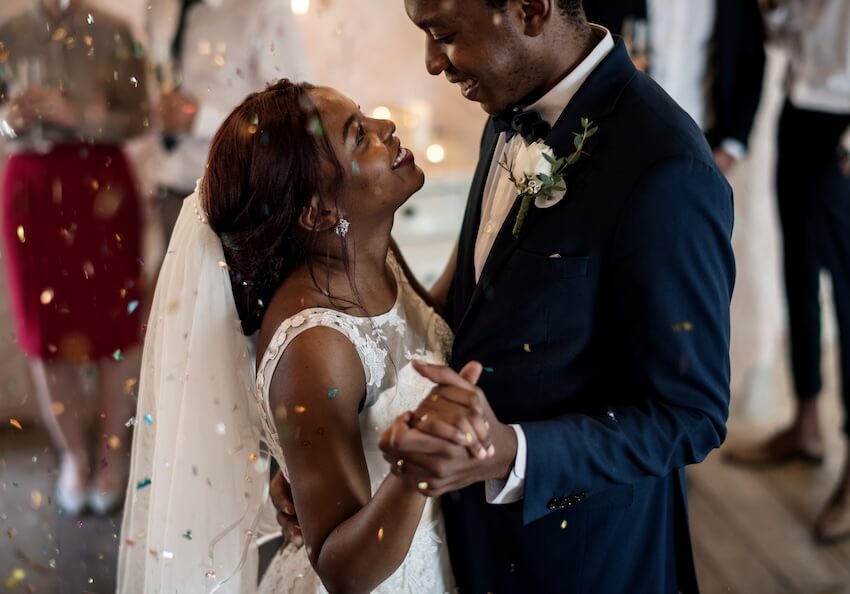
Weddings are inspiring testaments to the love and bonds people share with each other. They’re also incredibly diverse. Even if the structure is similar, no two weddings are exactly the same. They each have something special—a unique element—that often sticks with us for years.
Whether you’re looking for cultural rituals to include in your ceremony as a tribute to your spouse’s upbringing or want to know how weddings are celebrated worldwide, we made this list of fascinating wedding traditions from around the globe. Each offers a unique way to celebrate cultural differences and learn more about how people say “I do.”
Wedding Traditions: 12 Fascinating Ways to Celebrate the Big Day
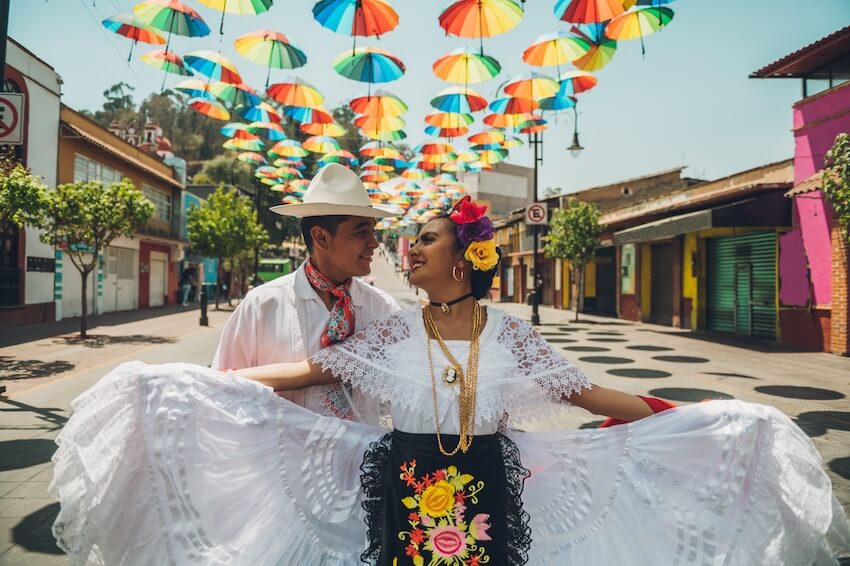
Weddings blend families, cultures, and traditions. While Americans are used to traditions like wearing a white dress or tossing a bouquet, wedding traditions vary from culture to culture. Every society has its own traditional wedding customs, and what we know in America as a typical wedding can look very different in other regions of the world. Here are some of the most intriguing wedding traditions from Fiji, Sweden, India, Mexico, and beyond.
1. Fiji: A Whale’s Tale (or Tooth!)
In Fiji, men are expected to take a test of true love and devotion before the wedding day. They’re tasked with providing their future father-in-law with a sperm whale tooth known as a tabua. The word translates to “sacred” and symbolizes good fortune.Â
By providing the bride’s father with a tabua, the groom shows that he respects the sanctity of the union. Dating back centuries, the practice was used for marriages, births, and funerals.
2. Sweden: The Kissing Game
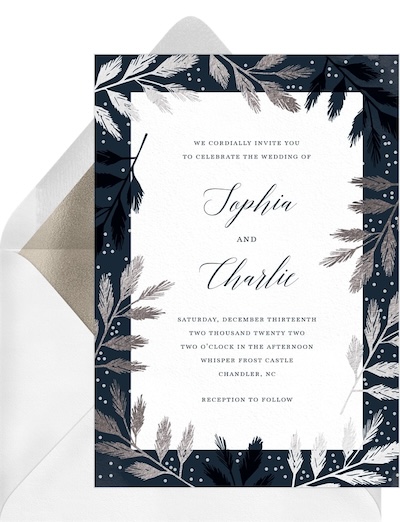
Design: Stacey Meacham Design, LLC
In Sweden, whenever the bride or groom leaves the table, the other gets kissed by wedding guests of the opposite sex. Today, many brides and grooms have a bell that they ring to signal when they’re leaving. It’s a fun and lighthearted tradition, although not one you’ll see often at American weddings.Â
3. Ireland: Dancing Away From Evil Fairies
In Ireland, when the bride is dancing, at least one of her feet must remain on the floor, lest evil fairies steal her away. In Irish folklore, fairies are attracted to things of beauty, including radiant brides. The superstition is that fairies can sweep the bride off her feet if she’s not grounded — even at a fairytale wedding!
Other ways Irish wedding traditions ward off evil? They avoid the color green, which is thought to attract fairies. They also incorporate horseshoes for good luck and hide small bells in their flower bouquets to fend off bad luck.Â
4. China: Shooting Cupid’s Arrows
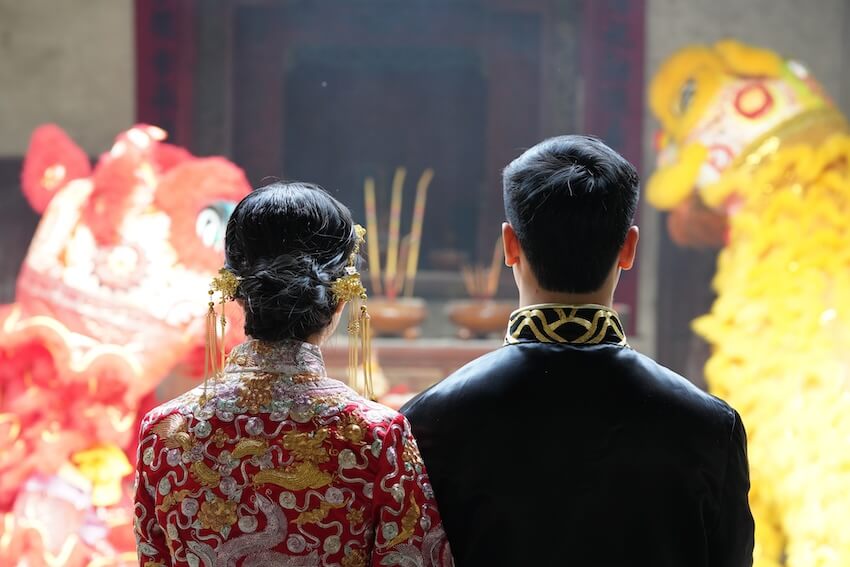
What’s more romantic than cupid creating a love connection? In some Chinese cultures, it’s shooting your own arrows at the bride!
The ethnic Chinese people known as Yugurs (also spelled Uyghurs) require the groom to shoot the bride with his bow and arrow three times. Fortunately, the arrows don’t have arrowheads (phew!). The groom then takes the arrows and the bow and breaks them as a sign of eternal love.
5. India: A Wedding Ransom
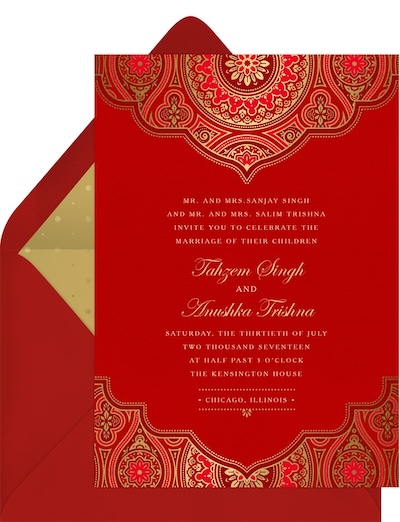
Design: Colin Cowie
In some parts of India, a unique Hindu wedding tradition called Joota Chupai occurs. The Indian groom wears a traditional embroidered shoe called joota. He must take off these shoes before approaching the altar, known as the mandap. As soon as the shoes leave his feet, the bride’s family and the groom’s family battle over the shoes.Â
If the bride’s family successfully acquires the shoes, they can hold the shoes for ransom. At the end of the ceremony, the groom must either find his shoes or offer money to get them back from the bride’s family. The tradition symbolizes acceptance and open hearts — since the two families must come together to have fun, laugh, and work through a challenge.
6. Congo: No Smiles, Please
While most happy couples are brimming with joy, some cultures require them to keep it in check. In the African country of Congo, the couple isn’t allowed to smile throughout the entire wedding ceremony and wedding reception. Otherwise, it will not be taken seriously. The idea here is that smiling or laughing means you aren’t serious or respectful of the magnitude of the moment.
7. USA: Traditional White Dress
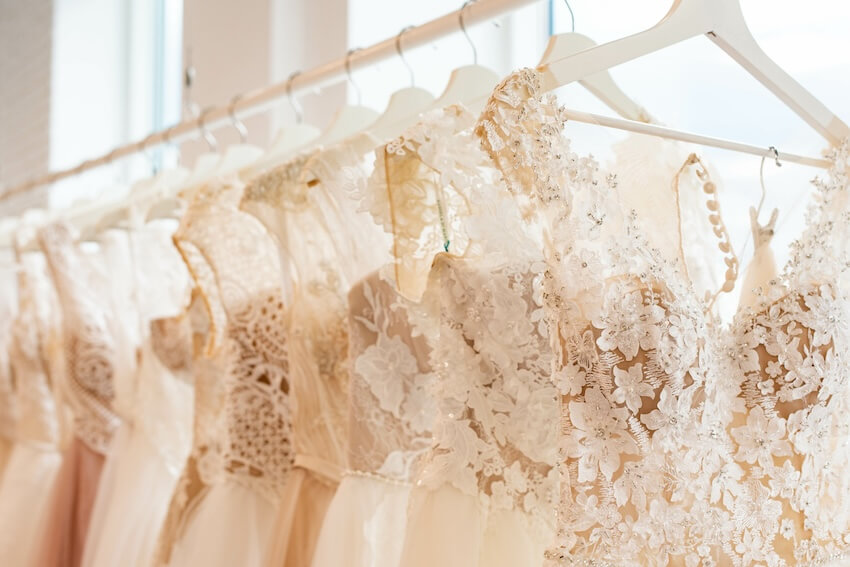
Did you know that although the white wedding dress is a common sight for Westerners, most of the world considers it strange? Perhaps because the color white is associated with mourning in many cultures around the world.
In 1849, “Godey’s Lady’s Book” (think of it as the “Vogue” magazine of the era) decided that white was the most appropriate color for brides. That’s because white is believed to symbolize purity and innocence. While many brides choose to wear white today, many brides are choosing to buck this tradition with gowns in various hues, including red, black, and green. (Perfect for gothic weddings!)
8. Norway: Crowns Ward Off Evil Spirits
Norwegian brides wear crowns attached to their wedding veils to help ward off evil spirits. Traditionally, these crowns are made of gold or silver — and many are passed down for generations. These crowns often have small charms that dangle and make noise, helping to ward off evil spirits and anything that may disrupt the bride’s happiness.
9. Global: The Roots of the Wedding Cake
Wedding cakes are rooted in several cultures, including Ancient Rome and England. One of the earliest is the Roman tradition of breaking bread over the bride’s head for good luck — similar to how American couples smear cake on their spouse’s face during the wedding reception.Â
In medieval England, wedding cakes were stacked as high as possible, and the married couple was expected to kiss over the tiers. If they did so successfully, superstition held they would have a prosperous life. That’s tied to traditional thinking that working together to overcome challenges meant the couple would successfully navigate life’s difficulties. In France, this tradition is reflected in the towering croquembouche at weddings.Â
The cake topper — a key part of any wedding theme — dates back to Victorian times when Queen Victoria wed Prince Albert in 1840. She topped her wedding cake with miniature sculptures resembling the newlyweds. As many couples wanted to get married like royalty, the tradition spread quickly.
10. Mexico: Symbolizing Unity with a LassoÂ
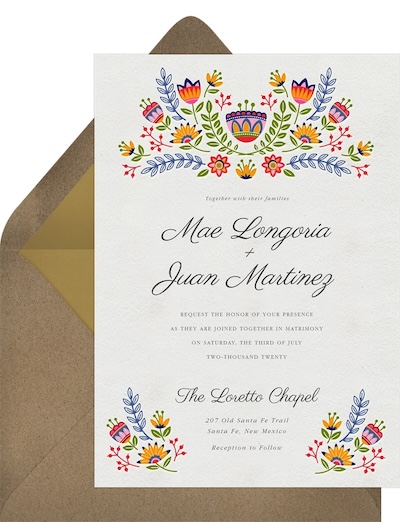
Design: Signature Greenvelope
In Mexico, a garland of flowers and rosary beads called a lazo or lasso is draped across the shoulders of the bride and groom in a figure-eight (infinity) shape. This Mexican tradition is usually part of a Catholic wedding ceremony, symbolizing eternal union. Other cultures in Latin America use similar traditions by placing a special shawl across the shoulders of the couple as they exchange their wedding vows and wedding rings.
11. Greece: Groomsmen Do the Grooming
In Greek culture, the best man — and sometimes a group of male family members or all of the men in the wedding party — uses a razor to shave the groom’s face before the nuptials. The act symbolizes the groom’s transition from boyhood to manhood. Like a classic American barbershop, the event also involves the “barbers” offering advice for a successful marriage and happy life.Â
12. USA: Something Old, Something New, Something Borrowed, Something Blue
If you’re familiar with American wedding traditions, this one is as popular as taking off a garter, the first dance, and a bouquet toss. Wearing something old has sentimental value and allows you to incorporate heirlooms or a special memento to honor close family members during the wedding celebration.
Something new is an homage to new beginnings, symbolizing optimism about your new future with your soulmate.
Something borrowed is a symbol of luck, by reusing something another bride wore during her big day. (Although this wedding tradition can easily work for grooms as well.) It’s another way to honor close relationships as you head into the next chapter of life.
Something blue has roots in superstition and fending off bad luck. Blue is the color of purity, and this item is typically worn under the wedding dress or as a subtle accessory, such as a garter, boutonniere, cufflink, or hair barrette.Â
Global Wedding Traditions to CelebrateÂ
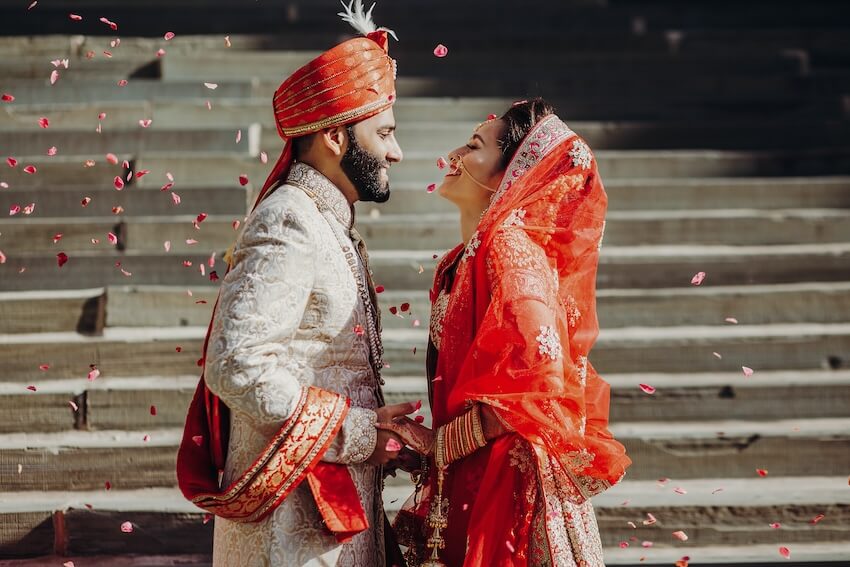
Backed by symbolism and cultural history, each of these wedding traditions offers a sense of connection to the past and can make the big day more memorable. Even if you don’t plan to incorporate any of these wedding traditions into your ceremony, learning about practices around the world is a chance to discover the special ways we all celebrate love.
If you’re tying the knot and planning your own nuptials, Greenvelope offers digital invitations for any wedding theme and style. Whether hosting a cultural affair in a global destination or keeping things local with an intimate ceremony, you can customize any design from our stunning selection of wedding invitations.


